Longevity of wood in Natural Playscapes
WOOD AS A PLAY MEDIUM
Wood is such an important material in natural play. It can be used in endless combinations and configurations; climbing, walls, fences, loose parts, edging, seating, etc. But wood is, at its essence, a natural material that degrades and changes fairly quickly with use and time. How long a wood element in a playground will last depends on a lot of factors; is it touching the ground, how much wear will it get, how big is it, has it been treated, what is the local climate, and what is the intended use or actual use.
I would like to think that wood should be used in a capacity that it is allowed to degrade and change, further exemplifying natural processes. But, with safety requirements this seems more of a dream then a functional reality. I believe this striving for long lived materials is what resulted in the plastic, fiberglass, and steel pieces we see today.
THE CASE STUDY
I recently visited a natural playground in Tampa Florida. The playground was designed by The Natural Playground Company. If you have not seen their work you should! They were not involved in the construction, so final wood choices and details were completed by the contractor. Ethan King from The Natural Playgrounds Company told me the following.
“We find a minimum of 5 years before any degradation occurs(on wood pieces), typically closer to 10. That’s only 5 years less than traditional equipment. Furthermore, rotting logs don’t cause splinters so there really isn’t any kind of a significant safety concern.”
Natural Playgrounds Company now treats all their products with a treatment called soy seal. They recommend treating wood ever 6 months in tough climates. I have been using Timber Pro’s internal wood stabilizer for park and play elements.
The Tampa play space is set in a unique Cottonwood grove. As an Oregonian it looked very ‘Florida’ with lizards, hanging moss, and an overall mangrove feel. Most of the elements are wood and the overall feel was magical woodland like. Today I am going to take a closer look at the wood elements.
 |
| From Natural Playgrounds http://naturalplaygrounds.com/ |
SUCCESSFUL LUMBER BASED PIECES
The following pieces seem to be constructed from lumber or dimensional piecesinstead of logs. Overall they seemed to be holding up well.
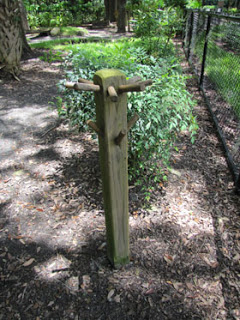 |
| Coat rack: made from a 4″ x4″ and round pegs |
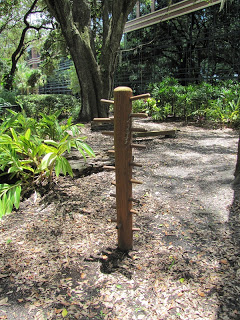 |
| Climber post – made from a 6″ round (maybe a fence post) and 1″ pegs. It could still hold my weight! |
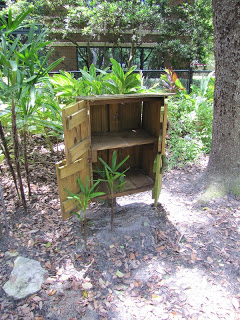 |
| Storage Cabinet – dimensional 1 and 2 by material |
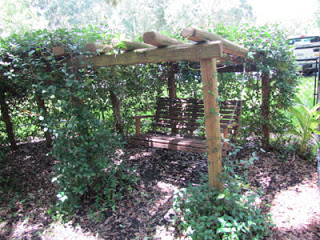 |
| Dimensional lumber trellis and swing. |
DETERIORATING LOG BASED ELEMENTS
I like to think that larger natural logs would last longer based on their size, protective bark, and unaltered state. The following pieces proved me wrong.
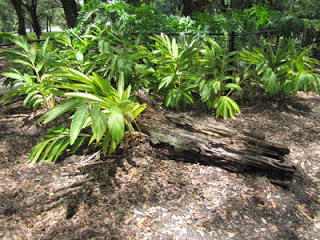 |
| This piece was more of a landscape feature. I am not sure what it looked like going in, but it is definitely on its way to biodegrading. |
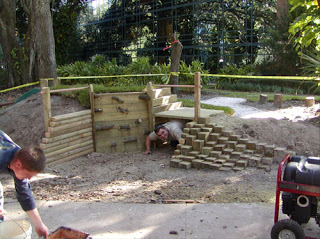 |
| Climber at the time of installation |
CONCLUSION
In this case study the dimensional lumber held up a lot better than the natural logs and wood pieces. This may be because of their treatment, use, or installation. It makes me wonder if this is a wide spread result and if I would find the same thing in the pacific northwest. I guess I better keep looking around!
Does anyone have photos of wood play elements 5+ years after installtion? I would love to see them.



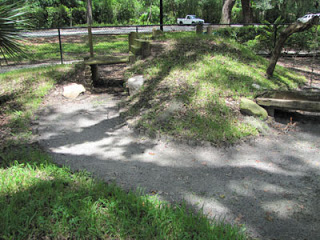
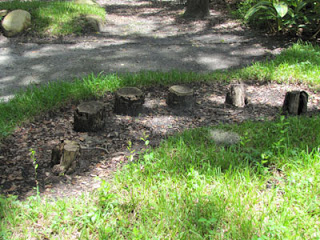

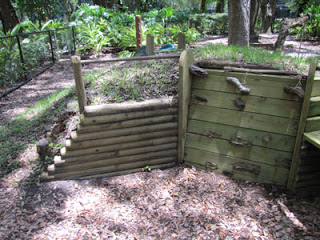


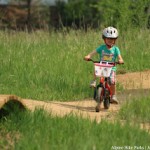
Thank you for this post – I think I just about ‘pinned’ all your images onto my pinterest board! The wooden elements in our playground are wearing at different paces – tree cookies tend to dry out and crack fairly quickly, although the kids still use the cracked pieces in their play. We had wooden outdoor play furniture in our outdoor kitchen but they weren’t very solid and fell apart after about a term so now (sadly) have reverted to plastic stoves etc that were donated to us